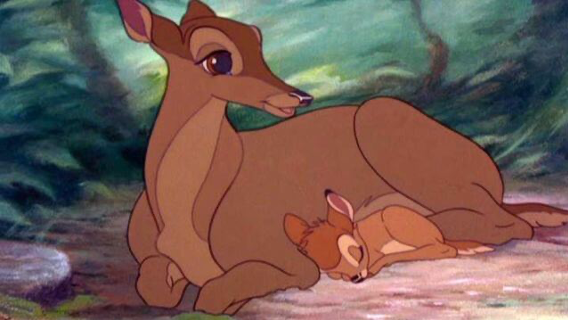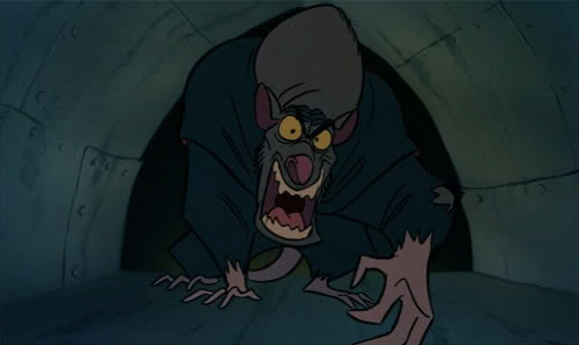
According to a user poll on IMDB, Mickey Mouse, Bugs Bunny, Tom and Jerry, Scooby-Doo, and Donald Duck are five of the most recognizable animated characters of all time. As well as being recognizable, these animated characters all have one feature in common; they are all animals, or rather, they are all based upon animals. The world’s first-ever motion picture was 1878’s The Galloping Horse by Eadweard Muybridge. This moving series of photographs featured a real horse named Sallie galloping with a rider on her back. Thus, animals have been a significant part of the film industry since it began, and this is especially true of animation. Gertie the Dinosaur (1914, dir. Winsor McCay), Steamboat Willie (1928, dir. Walt Disney and Ub Iwerks), Lady and the Tramp (1955, dir. Clyde Geronimi et al.), and The Cat Returns (1999, dir. Hiroyuki Morita) are just four notable examples of the importance of animal characters within the history of animation. There are thousands, if not millions, more examples that could be cited here.
My own research into Walt Disney Animation Studios found that every Walt Disney Studios film made between 1937 and 2016 included non-human animals. However, not every WDAS film from this period featured humans. To illustrate, The Lion King (1994, dir. Roger Allers and Rob Minkoff) and Dinosaur (1999, dir. Ralph Zondag and Eric Leighton, 1999) feature numerous animal characters yet no human characters at all. Surely, the fact that every film from the studio features animals between 1937 and 2016 is quite significant and thus worthy of study? Clearly not, as I believe that I was the first scholar to explore the depictions of animals in Disney films in-depth.
Despite their massive and unique contribution, animals have been largely ignored by film scholars, including those in the field of animation. That said, the few studies that have combined animals and animation have indeed been excellent. For instance, David Whitley’s The Idea of Nature in Disney Animation (2008) and Paul Wells’ The Animated Bestiary (2009) both make significant contributions to the interdisciplinary field of animals and animation. Yet given how common animals are within animation, far more research is needed. There are so many aspects of animation to be studied in relation to animals, such as neoteny, anthropomorphism, and the uncanny valley effect, to name just three. Therefore, the potential of this field is huge.
Yet, as characters, animals have been understudied in many academic fields, such as film studies generally, media studies more broadly, English literature, and so forth. There are various reasons as to why this is the case. Whilst film, particularly animation, tends to celebrate animals, the reality of the human-animal relationship has become notoriously difficult. Billions of animals are legally killed by humans every day. Many of these animals have uncomfortable, restricted, lives that are usually minimized or ignored in cultural representations. This reality is rarely depicted because it is a truth that many humans find challenging to confront despite how common it is. A study of animals in animation forces one to admit that representations of animals in animation are romanticized for the sole benefit of humans. Thus, the use of animals by animators is anthropocentric. This is likely to be one of the primary reasons why animal characters are significantly understudied despite their prevalence in animation, or in the humanities generally.

Further to this, in many cases, animals have only been studied in relation to what human identities they possibly represent. For example, there has been much saying of how animals have been used to depict racial or gender biases. Whilst these observations may be correct, they also highlight that the study of animals in animation is often anthropocentric, rather than animal-centered. Yet, I believe that animals deserve their own studies, separate from studies of humans. Animation has a massive effect on how people view and treat animals in reality. For example, Bambi (1942, dir. David Hand) is believed to have influenced the modern decline in hunting; fur clothing became less-popular after the release of One Hundred and One Dalmatians (1961, dir. Wolfgang Reitherman et al.); Finding Nemo (2003, dir. Andrew Stanton) led to a surge in the demand for pet clownfish. Therefore, even though animation is not reality, it affects animals in reality. This is why animals deserve their own studies, and why the interdisciplinary field of animals and animation is so important.
Another reason why animals have been understudied in animation and other fields may be because animals are unable to understand or respond to incorrect depictions of themselves. Whilst some species, such as dogs and rabbits, are often romanticized in animation, other species, such as rats and cats, are often depicted negatively. For example, rats are often depicted as anti-social and unhygienic.

Real rats are unable to argue against this common portrayal, and if there is no criticism, then how can film-makers know that there is a problem? Criticism is often what has led to progressive changes in animation. For example, it has been argued that Walt Disney Studios stopped using so many female villains after much criticism that such characters were anti-feminist (Davis, 2015: 244). Thus, evidence suggests that Walt Disney Studios has clearly responded to the feminist criticism that they have received, and they have changed their depictions of females accordingly. If feminist scholars had not encouraged such changes, it is unlikely that the portrayal of women in animation would have improved as much as it has so far. However, animals cannot speak out against the misleading depictions of their species. Therefore, criticisms of how animals are portrayed must come from humans. The troublesome human-animal relationship is massively balanced in favor of humans. Therefore, it is our responsibility to improve the situation. This is both one of the reasons why animals have been understudied, but also why they must be better studied.
Indeed, the Society for Animation Studies is adequately responding to the growing academic interest in this area. In 2018, SAS created an “Animals and Animation” special interest group. They also had two animal-themed blogs in 2019, one on animals generally and one on cats. As animation scholars, let’s keep this momentum going. We should suggest more animal-themed posts to highlight the huge unique potential of this field. It is the least we can do to show our appreciation for other animals given how much inspiration they have given animators over the years.
References
Davis, A. M. (2015) Handsome Heroes and Vile Villains: Masculinity in Disney’s Feature Films. Bloomington: Indiana University Press.
Rebecca Stanton recently completed a Ph.D. in representations of animal harm and objectification in Walt Disney Animation Studios films (1937-2016) at Northumbria University. Her thesis will be published through Palgrave Macmillan’s Animal Ethics book series. She is the conveyor if the “Animals and Animation” SIG group for the Society of Animation Studies. She is an associate fellow at the Oxford Center for Animal Ethics, and she is a member of the Vegan Society’s researcher network.

I believe that animals deserve their own studies, separate from studies of humans. Animation has a massive effect on how people view and treat animals in reality.
Thanks for this excellent blog post Rebecca!
As someone who started as a painter and sculptor before working as a “3D generalist” in the advertising industry, I have a particular interest in animals and CGI technology (i.e. 3D animation and vfx software, mocap technology etc). In short, I wonder about the role specific animation technologies play in the capacity for humans to “affect and be affected” (to use a phrase from DeLanda).
I will be sure to join the “Animals in Animation” SIG and look forward to keeping this important conversation alive.
Thanks again … I look forward to reading your book.
Very provocative and enriching discussion, Rebecca!
I think one area of research/theory that will be very beneficial to the further studies of animals in animation is feminist & eco-feminist thought. Donna J. Haraway’s Staying With The Trouble (2016) comes to mind in thinking through new relationality to non-human life.
Hi Jacqueline.
Yes, I agree. The best book on the connection between the abuse of women and animals is undoubtedly Carol J. Adams’ The Sexual Politics of Meat (1993).
Thank you so much for this Rebecca! This is such an important topic that, as you say, has been understudied in our field (and others). I can’t wait to read your published thesis, any idea when it will be in print?
Thank you so much. My thesis is being published via the Palgrave Macmillan Animal Ethics series in October: https://www.palgrave.com/gp/book/9783030493158